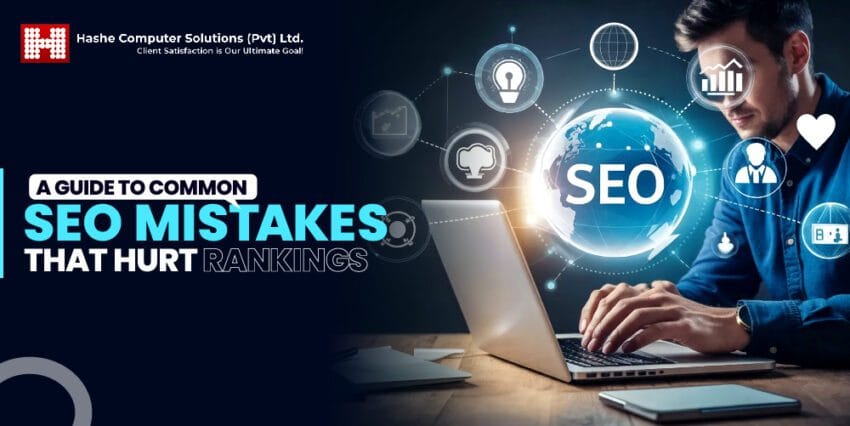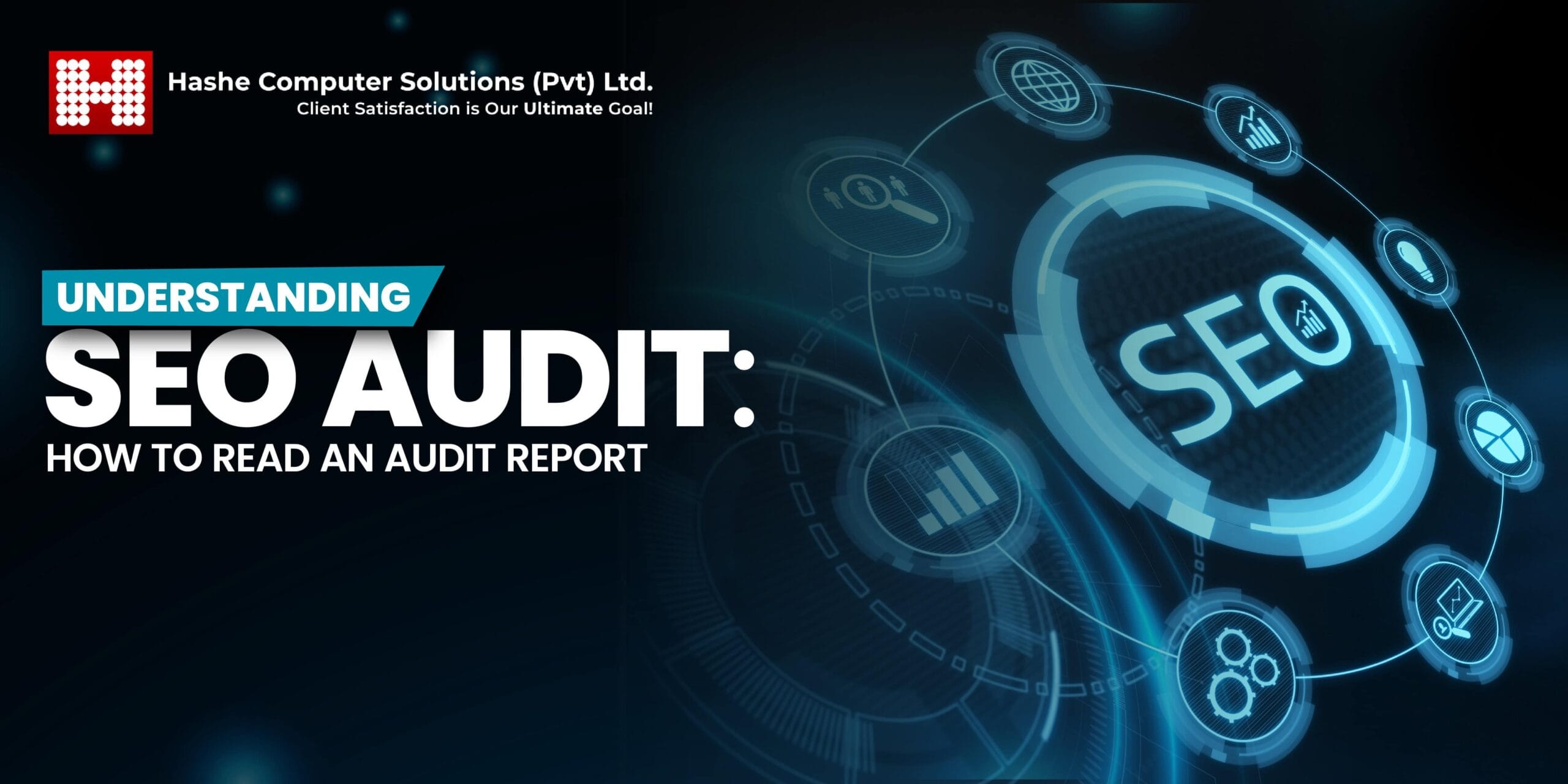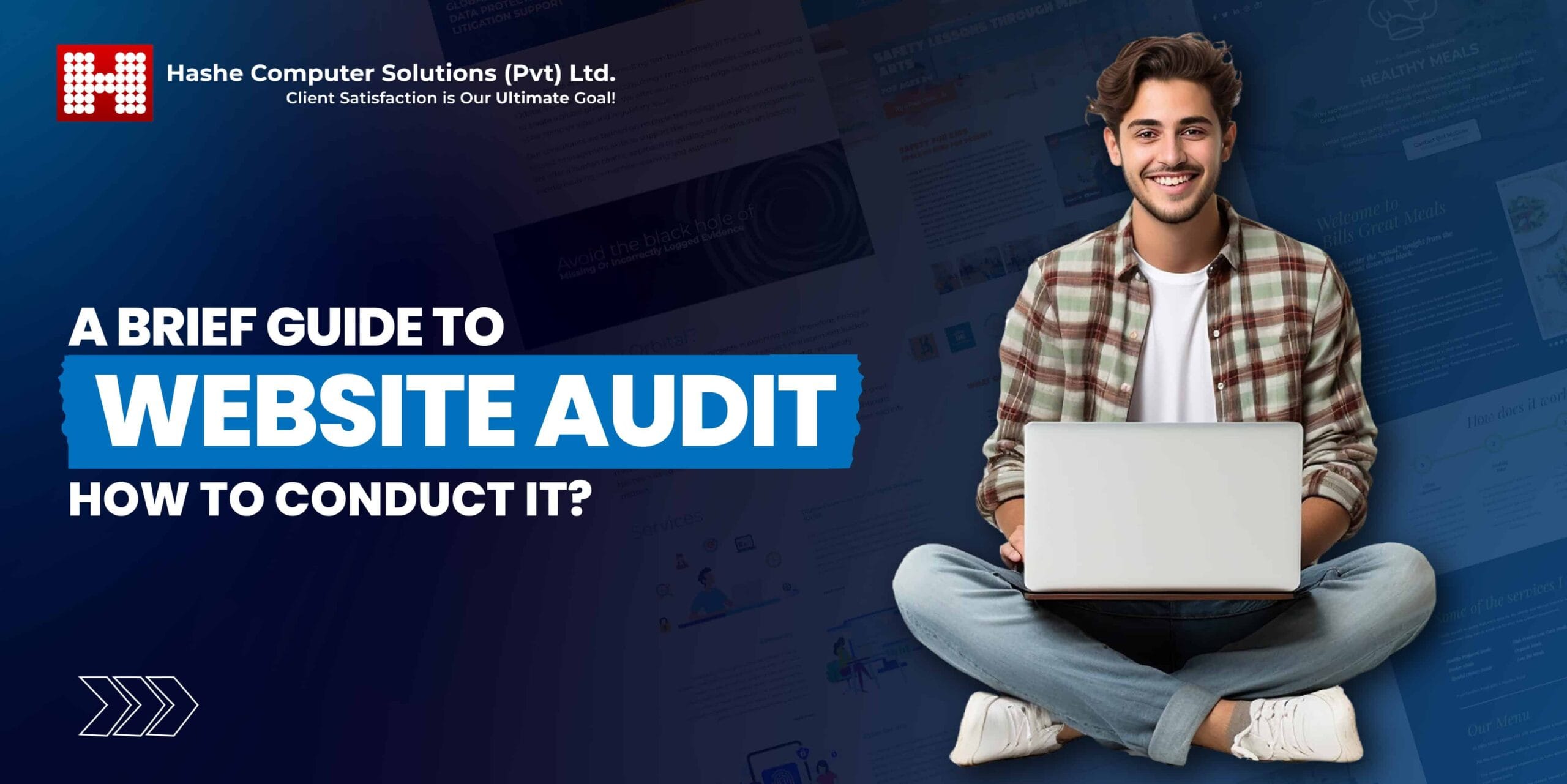
Search engine optimization (SEO) is vital for establishing a successful online presence. However, if you have invested time in trying to improve your website’s Google ranking, you know how tricky SEO can be. One moment, you are following best practices, and the next, you realize you may be harming your rankings without even knowing it.
The truth is that SEO is more than simply what you do; it is also about what you avoid. Unfortunately, even minor errors, such as keyword stuffing and poor content structure, can jeopardize your SEO strategy, considerably impacting how search engines view your website.
The good news? Most SEO errors are rather frequent, and once you know what to look for, most are resolvable. Whether you manage content for a larger organization, run a blog, or handle a small business website, understanding these pitfalls can help you avoid wasting time, frustration, and missed opportunities.
This article will discuss the most common SEO mistakes and how to prevent them so your website remains competitive in search engine results.
Common SEO Mistakes to Avoid
SEO issues fall into five types. Each factor influences how search engines rank and show your website. You may increase your website’s performance and visibility by fixing SEO problems in each area and making it more SEO-friendly.
- Technical SEO Mistakes: These mistakes manifest in the backend of your website and include poor page speed, problems with mobile optimization, and incorrect robots.txt and sitemap.xml file configuration. These technical details are critical for search engine spiders and crawlers to index your website.
- Content-Related Mistakes: Your site’s reputation and user engagement may suffer from keyword stuffing, poor content, and a failure to define keyword intent.
- On-Page SEO Mistakes: Optimizing individual pages to rank higher is known as “on-page SEO.” Unstructured headers, poorly optimized meta tags, and inaccurate keyword clustering are common mistakes.
- Off-Page SEO Mistakes: These errors occur outside of your website, such as adopting spamming ways to gain backlinks or trusting low-quality sites for link development. They may affect your website’s reputation and authority.
- Local SEO Mistakes: Businesses that target specific geolocations might miss out on opportunities to draw in local clients if they neglect their Google Business Profile or do not optimize for local keywords.
Technical SEO Mistakes
Technical SEO is an essential component of any well-optimized website. If you ignore technical SEO issues, your content, regardless of quality, will fail to perform effectively. These mistakes can result in poorer ranks on Search Engine Results Pages (SERP) since they make it more difficult for search engines to crawl and index your website.
Slow Page Speed
One of the most prevalent technical SEO problems that harm both SEO and UX (user experience) is slow page speed. A slow-loading website leads to significant bounce rates since visitors leave before it fully loads, signaling to search engines that your site gives a poor user experience. Inadequate speed might hurt your SEO rankings and make it harder to draw in and retain organic traffic.
In response, Google launched Core Web Vitals, a set of metrics that demonstrate a webpage’s performance in terms of stability, interactivity, and loading speed. The first step in determining whether your website is slow is to test its speed. You may get comprehensive problem analysis and solutions using tools like PageSpeed Insights.
How to Fix
- Minimize JavaScript execution. Excessive JavaScript may prevent a page from being interactive. Split JavaScript into manageable chunks so that browsers can process interactions more quickly.
- Enhance server response times. A faster server may decrease the website’s response time to user inputs.
- Reduce the number of third-party scripts. Third-party analytics or tracking programs can slow your site’s response speed.
Neglecting Mobile Optimization
Google employs mobile-first indexing, which primarily ranks websites based on their mobile version rather than their desktop one. Regardless of how incredible the desktop version of your website is, it will rank low if not optimized for mobile devices. Technical SEO issues such as slow loading times, clunky layouts, and difficult-to-click links can all contribute to a poor mobile experience.
How to Fix
- Responsive design. Use a responsive design that works well on desktops and mobile devices and adjusts to various screen sizes.
- Check for mobile friendliness. Google’s Mobile-Friendly Test can help you analyze your website’s mobile usability and find problems.
- Speed up load times. Reduce the size of HTML, CSS, and JavaScript files, enable browser caching, and compress images to speed up loading times because mobile consumers frequently have less tolerance.
- Make navigation easier. Avoid cramming pages with extraneous components, and ensure buttons and links are big enough for consumers to click them effortlessly.
Incorrect Robot.txt and Sitemap.xml Configurations
Search engines can more efficiently index and crawl your website via the sitemap.xml and robots.txt files. Misconfigured robots.txt files may prevent search engines from crawling critical pages, such as blog articles or product pages. Pages will become invisible in search results, lowering your visibility and SEO rankings.
Likewise, an incorrect sitemap.xml file may hinder search engines from finding newly added or modified pages on your website. Inaccurate indexing of your material can lead to decreased traffic and rankings.
How to Fix
- Examine the robots.txt file. Check that it does not obstruct critical areas of your website. Use Google Search Console to review and verify your robots.txt file. Do not disallow crucial pages like your homepage, product pages, or blog content.
- Streamline the sitemap.xml file. Verify that your sitemap.xml is updated and correctly identifies all of your site’s key pages. Ensure that search engines can crawl and index your pages by submitting your sitemap to Google Search Console.
HTTP Status Code Errors
HTTP status codes inform users and search engines about the availability of a webpage. Search engines believe that a page does not exist when it wrongly returns a 404 status code (Page Not Found) despite being reachable by people. Consequently, the page will not be indexed and will not appear in search results. If not handled correctly, other status codes, such as 301 (Redirects) or 500 (Server Error), might likewise have an impact on SEO.
How to Fix
- Keep an eye on HTTP status codes. Use Google Search Console or crawl tools like Screaming Frog to regularly examine your site’s status codes for 404, 500, or incorrect redirect codes. Restoring the missing page or using a 301 redirect to bring people to a relevant page are two ways to address 404 issues.
- Make sure the redirects are proper. Always set up 301 redirects when deleting pages or changing URLs so that any SEO value from the old URL passes to the new one. Your pages will remain indexed, and you won’t lose visitors.
Unconfigured Basic Redirects
Users may end up on broken or out-of-date pages when basic redirects are not properly configured, which degrades SEO performance and results in a poor user experience. For instance, you will lose the page’s link equity if you relocate it to a new URL without setting up a 301 redirect. Redirecting non-www to www versions of your website to prevent duplicating content or switching from HTTP to HTTPS are common situations where you need redirects.
How to Fix
- Implement 301 redirects. By transferring the page’s SEO value to the new URL, a 301 redirect guarantees that users are taken to the right page. It keeps broken links at bay and preserves the SEO value of your website.
- Manage common redirects. To prevent duplicate content problems and improve site security, ensure your website correctly redirects from HTTP to HTTPS and between non-www and www versions.
Content-Related Mistakes
If your content marketing fails to captivate users and match their expectations, your website will not rank well, even if it is technically flawless. Search engines favor relevant and helpful content that aligns with user intent.
Let’s look at the most common content-related SEO mistakes.
Keyword Stuffing
Stuffing content with keywords to improve search engine rankings is known as keyword stuffing. Excessive usage of keywords makes the text awkward and unpleasant to read, which causes high bounce rates as readers quickly abandon the website. When search engines identify keyword stuffing, they might penalize your website by removing it from search results or decreasing its SEO ranks.
How to Fix
- Write naturally. Content should be written with readers in mind, not only search engines. Ensure the keywords blend in with the content and don’t interfere with its natural flow.
- Employ variations. For better readability, utilize synonyms and related terms rather than repeating the same keyword.
- Organize your keyword placement. Don’t cram keywords into every line. Instead, add them in strategic places like the title, meta tags, and H1 headings.
Low-Quality Content
Poorly written, generic, or uninformative content will not captivate readers, which can result in poorer SEO ranks and higher bounce rates. Search engines favor unique and relevant content that provides value to the readers.
How to Fix
- Research the audience’s needs. Examine the interests, queries, and problems of your target audience. Discover what your audience is looking for and what kinds of material appeal to them by using social media or Google Trends.
- Produce original and unique content. Create original content that provides helpful information or fresh perspectives. Avoid copying information from other websites since this might damage your credibility and result in SEO penalties.
- Keep your tone constant. Maintain a consistent tone across all of your content. Being consistent keeps readers interested and promotes trust.
Incorrect Definition of Keyword Intent
You risk creating content irrelevant to user searches if you don’t comprehend the keyword intent. User intent is of four primary types: informational (users seek answers), commercial (users research products or services), navigational (users search a specific website), and transactional (users are ready to buy).
Search engines will rank your content lower if you target the wrong intent because it won’t satisfy the user’s needs.
How to Fix
- Determine keyword intent. Examine each keyword’s intent before producing any content. Is the user visiting a particular website, seeking information, or wishing to make a purchase? To find out what kind of content presently ranks for those keywords, use Google Search or keyword research tools.
- Ensure that the content aligns with the intent. After understanding the keyword intent, decide on the format for your content:
- Create blog posts or guides for informational intent.
- Concentrate on product pages or comparisons for commercial intent.
- Create relevant landing pages for navigational intent.
- Make product or checkout pages with strong CTAs for transactional intent.
Infrequent Content Updates
Outdated content can lower your rankings because search engines prefer relevant and fresh content. Your content will become less relevant to current market trends and lose value for users and search engines if you don’t update it regularly.
How to Fix
- Update the existing content. Ensure that your older content is correct and up to date by reviewing and updating it frequently. Enhance readability, add new data, and update statistics.
- Be in line with trends. Keep your website engaging and relevant by keeping up with industry trends and incorporating them into your content.
- Perform website audits regularly. Schedule an audit of your content to ensure it’s still optimized and relevant.
Ignoring Long-Tail Keyword Optimization
Long-tail keywords can attract more targeted traffic, yet many websites ignore them. Ranking for high-volume keywords might be challenging due to their intense competition. Long-tail keywords frequently have lower competition and attract consumers who are about to make a purchase or decision.
How to Fix
- Explore long-tail keywords. Use SEMrush or Google Keyword Planner to find long-tail keywords associated with your field. Since they focus on more specialized user queries, these keywords usually have lower search volumes but better conversion potential.
- Create content centered on long-tail keywords. For instance, write an article about the “budget-friendly vacation spots in California” rather than “vacation spots.” By doing this, you can draw in people searching for specific content and rank higher for more targeted searches.
Duplicate Content
Several pages on your website may compete for the same keyword due to duplicate content, a phenomenon known as keyword cannibalization. This common SEO mistake makes it difficult for search engines to determine which page should rank higher, which might make all competing pages appear less authoritative. Confusion could negatively affect your site’s visibility by lowering rankings for competing pages.
How to Fix
- Combine the content. If you have similar content on several pages, consolidate them into a single, well-written page. You will keep pages from competing with one another and make one well-optimized page more authoritative.
- Employ canonical tags. When duplicate material is required (for example, on product pages with similar descriptions), canonical tags help identify the original page so that search engines will index and rank it higher.
On-Page SEO Mistakes
Modifying web pages to raise ranks and draw in more relevant organic traffic is known as on-page SEO. It immediately influences user interaction with your website and how search engines interpret your page content.
On-page components, including title tags, meta descriptions, header tags (H1–H6), and internal links, help search engines navigate your website and index your pages. Enhancing these components can result in increased organic traffic, improved SEO results, and happier users who spend more time on your site.
Incorrect Keyword Clustering
Combining many keyword groups into a single article results in incorrect keyword clustering, which lowers the content’s relevance.
For instance, combining commercial and informational keywords in the same article can confuse search engines and consumers. Since search engines have a harder time identifying the article’s emphasis when there is a lack of clarity, the content performs worse in search results. It is more challenging to attract the right audience if your content is unclear or fails to include the appropriate keywords.
How to Fix
- Cluster keywords according to the intent. Adhere to the “one group of keywords—one cluster” approach. Sort terms according to their intent, be it commercial or informational.
- Avoid merging different clusters. Do not try to cover too many topics in a single article. Make distinct content pieces for every keyword cluster, ensuring each article addresses the user’s particular query and adheres to a single intent.
Poor Meta Tag Optimization
Meta tags, such as the title and description, inform users and search engines about the purpose of a page. Search engines may not fully comprehend your content if your meta tags are not optimized or contain appropriate keywords, and users may choose to ignore it in search results.
How to Fix
- Use relevant keywords. Utilize focused keywords you have identified through keyword research to enhance your title and description meta tags. Ensure that the keywords align with the content’s intent.
- Create compelling meta tags. Ensure your titles and meta descriptions contain keywords to entice readers to click. The title should be brief and informative, and the meta description should provide an engaging content summary.
Unoptimized H1-H6 Headings
By establishing a content hierarchy, the H1-H6 headers assist search engines in comprehending the structure and significance of the various sections on your page. Search engines struggle to understand your content without optimized headers and a proper hierarchy. As a result, viewers may become confused by your content, and your visibility in SERPs may decrease.
How to Fix
- Headers should contain relevant keywords. Ensure the keywords in your H1-H6 headers are pertinent to the content. Since the H1 serves as the page’s principal title, it should include the primary keyword. H2-H6 headers should arrange subtopics and contain secondary keywords to assist visitors and search engines in navigating the page.
- Maintain an appropriate hierarchy. Utilize H1 as the primary title just once, and divide the information into logical sections using H2-H6 headers. You may improve your page’s SEO rankings by making it simpler for search engines to comprehend and index your content.
Ignoring Internal Linking
Internal linking aids search engines in navigating and comprehending the structure of your website. Readers may not find some crucial pages, or they may not rank as highly as they could if you ignore internal linking. Pages with a higher number of internal links are deemed more valuable by search engines and receive greater SEO weight.
How to Fix
- Employ diverse anchor text. To more effectively describe the linked content, utilize anchor text that is both descriptive and pertinent when creating internal links. Steer clear of cliches like “click here.”
- Utilize contextual links. Incorporating internal links into your content where they are most relevant to the subject matter makes it flow naturally and directs readers to related pages, which keeps them on your site longer.
- Link from footers and navigation menus. These links guarantee that customers can swiftly access crucial pages on your website and aid search engines in crawling its structure.
Inaccurate or Missing Structured Data Markup
Structured data markup helps search engines better comprehend your website’s structure and content. Inaccurate or missing structured data can cause your website to lose out on valuable snippets that highlight your links in search results, such as pricing, photos, or rating stars. These improved search capabilities can increase website traffic and promote user interest in your content.
How to Fix
- Implement structured data accurately. If you want to prepare your structured data markup correctly, use the Schema Markup Testing Tool. To improve your chances of displaying significant search engine results, include structured data for aspects like reviews, products, and events.
- Verify and test. To ensure that search engines can read and show the accurate information from your site, test and validate your markup using Google Search Console after implementing structured data.
Image Mistakes
Unoptimized images might cause your website to load more slowly, negatively impacting user experience and SEO. Large picture files slow page load times and increase bounce rates as users become dissatisfied and abandon the site.
When alt text is missing, search engines have a harder time deciphering what the image depicts, which might hurt your site’s rankings. Additionally, alt text is crucial for accessibility since it makes the images easier for people with disabilities to understand.
How to Fix
- Employ alt text to describe images. Give each image a descriptive alt text. You will enhance your site’s accessibility for people with visual impairments and assist search engines in indexing the photos.
- Reduce the size of the images. Use programs like TinyPNG or JPEG-Optimizer to reduce the file size of your photos without sacrificing quality. Smaller images load more quickly, which enhances user experience and page speed.
- Select an appropriate image format. For pictures, use JPEG; for graphics or transparent images, use PNG.
- Modify the image’s dimensions. Reduce load times and enhance page performance by resizing photos to match the available space.
Off-Page SEO Mistakes
Activities that take place outside of your website but still influence its results are known as off-page SEO. It usually entails creating external links, or link building, by which reputable websites link to yours to tell search engines that your website is reliable and pertinent.
Reputation management, which includes positive reviews, social media engagement, and brand mentions, contributes to the development of authority and credibility.
Off-page optimization raises your website’s search engine ranks, draws in organic traffic, and helps you stand out. Common SEO mistakes, such as low-quality backlinks and poor reputation management, can harm your website’s performance.
Employing Spammy Methods to Get Backlinks
Securing backlinks through mass posting, link exchanges, or dubious link schemes can significantly undermine your website’s SEO. Although backlinks increase domain authority, search engines actively penalize websites that employ deceptive tactics to obtain links. Using black-hat SEO techniques lowers your site’s ranking or, in the worst situations, gets it taken out of search engine indexes.
How to Fix
- Obtain high-quality backlinks. Develop backlinks organically by producing worthwhile, shareable content that other websites are willing to link to. Reputable websites provide high-quality backlinks, which increase your SEO and carry more weight.
- Do not use link schemes. Avoid buying links or posting frequently in subpar forums or directories. Google’s algorithms, such as Penguin, are made to identify and penalize these kinds of activities.
Incorrect Donor Sites Selection Methodology
Many people use deceptive metrics like Domain Rating (DR) or Domain Authority (DA) when selecting donor sites for backlinks. These third-party indicators don’t necessarily provide a complete picture of the quality or relevancy of a website.
You may overlook crucial elements like the site’s backlink profile or ranking for relevant keywords if you only pay attention to DR or DA.
How to Fix
- Examine the profile of backlinks. Verify that there is an adequate balance of incoming and outgoing links. Also, check the quality of the websites to which it links. Your rankings may suffer if a website has a phony or spammy backlink profile.
- Track traffic and keyword rankings. Examine the organic traffic patterns of the donor website and determine the proportion of its keywords that appear in the top ten search results. Strong rankings and a steady increase in traffic are signs of a website’s legitimacy and long-term worth.
- Prioritize sites with natural growth. A website with a natural link profile and consistent organic traffic increase is worth choosing. These websites have a higher chance of enhancing your SEO without putting you at risk for search engine penalties.
Adherence to the Domain Rating (DR) Metric
Domain Rating (DR), a metric that gauges the strength of a website’s backlink profile, is given top priority by many SEO specialists. DR is helpful, but it’s easily manipulated and doesn’t always accurately represent the authority or worth of a website.
For instance, a website that receives only a few thousand monthly visitors yet claims a DR of 70 is probably using inflated or fake metrics. This discrepancy shows that DR alone cannot assess a site’s backlink quality.
How to Fix
- Analyze the quality of the traffic and content. Examine whether the site’s traffic and DR are proportionate. A website with limited traffic and a high DR probably doesn’t offer anything. Prefer websites with healthy, steady traffic growth and high-quality content.
- Examine engagement metrics. Assess low bounce rates, pages per session, and time spent on the website. These are more accurate representations of the site’s actual authority and relevancy in the eyes of search engines and users.
Unbalanced Anchor List
Search engines may get suspicious of excessive use of exact-match anchor text (the link text matches the exact keyword you wish to rank for) since it looks artificial and manipulative. An excessive number of exact-match anchors in your backlink profile tells search engines that you could be attempting to trick the system. You may incur SEO penalties, resulting in lower rankings.
How to Fix
- Employ a variety of anchor texts. Combine keyword-rich anchors, generic anchors (like “click here”), and branded anchors. You won’t get penalized for building a natural link profile.
- Try to make your profile look natural. Make links that appear organic, as though you introduced them to improve user experience rather than to influence search engine rankings.
Local SEO Mistakes
Your company won’t show up in search results for locals if you don’t optimize for local keywords. Companies that want to reach a global audience should also consider international SEO services and employ location-specific keywords. Missed opportunities for local and international traffic and customers can result from neglecting local or international keywords.
Here are some common local SEO mistakes that hurt the online ranking of your website.
Neglecting Google My Business
Your presence in local search results may be limited if you neglect your Google Business Profile. Inaccurate or missing information in your profile will not draw in local clients and will hurt your search engine rankings. Furthermore, out-of-date services or incorrect hours can irritate potential customers and harm your company’s online reputation.
How to Fix
- Maintain current and accurate information. Make sure your contact details, location, business hours, and services are always correct.
- Interact with customer reviews. To demonstrate your concern for your clients, reply to both favorable and unfavorable reviews. Engaging with reviews enhances your online image and can have a favorable effect on local search results.
Poor Local Keyword Optimization
Your company will not show up in local search results for individuals in your area if you don’t optimize for local keywords. Additionally, search engines might not find it relevant to local searches. You will lose out on local traffic and prospective clients who are actively searching for products or services nearby in your area.
How to Fix
- Make location-specific pages. Create distinct pages with local keywords optimized for each area you serve.
- Optimize meta tags. Each location-specific page’s meta titles, descriptions, and headers should contain relevant local keywords. It increases your chances of appearing higher in local search results by assisting search engines in comprehending each page.
Prevent SEO Mistakes with Hashe’s Skilled Assistance
Making mistakes in SEO may be expensive and complicated, leading to decreased conversions, poorer rankings, and lost traffic.
You may steer clear of these expensive mistakes and align your SEO approach with industry best practices by speaking with Hashe’s SEO experts. Our SEO specialists can help you focus your efforts, pinpoint issues, and provide tailored solutions that will boost the functionality and ROI of your website.
To increase your site’s visibility and achieve long-term growth, Hashe can offer the best SEO services, including thorough website audits, keyword strategies, content optimization, and link-building.
Contact Hashe Computer Solutions for Free Website Audit Today!
Don’t worry if all this SEO stuff seems daunting; you don’t have to do it by yourself. At Hashe, our expertise lies in assisting companies in understanding and improving the SEO of their websites. Whether you want to boost your rankings, tackle any technical issues, or simply get a better grasp of your current audit report, we’re excited to assist you! What’s the best part? To get you started, we provide a free website audit. Let us work together to take your website to the next level!
Are you looking for the best IT providers for your IT projects? Look no further than Hashe! Hashe Computer Solutions is a leading IT solutions provider that offers world-class software, mobile application, web development, and digital marketing services. Contact us for the best web design and Digital Marketing solutions!
Was this helpful?
Last Modified: September 9, 2025 at 12:15 pm
176 views















